
Is it controversial to call the recently revised Audi RS3 and Mk8.5 VW Golf R the best of their respective breeds? There’s been a fast and four-wheel-drive Golf for more than 20 years now, and an RS3 for almost a decade and a half. Yet for the first time, VW is now offering an R with a standard torque vectoring rear diff (that used to be a four-figure option), while Audi has made this RS3 more than seven seconds faster around the Nordschleife than its predecessor – with no more power. Some far flung corner of the internet must have exploded with the news that an RS3 was having its chassis methodically overhauled – damper tweaks, software upgrades, some brake biting to help turn in – to the benefit of lap times.
To a few, a fast Audi A3 is probably still about nothing more than warble and understeer, and there are likely still jokes going around about cheap Golf R leases. But in case anyone needed reminding, a lot has changed in the past decade, and with the end surely nigh for both R and RS in their current, exclusively petrol-powered guises it’s nice to see worthwhile hardware improvements for both. This begs the obvious question – can the Audi justify its price premium with a legendary engine and swankier cabin? Or is a Golf R really all the all-wheel-drive hatch you’ll need?
If there is debate about either model being at its generational peak, the source of the controversy is located inside. Both Golf and RS3 are tangibly less nice places to spend time day-to-day than their predecessors from half a dozen years ago, and there remains no escaping that unfortunately. Scratchy plastics abound in the Golf, from seat lever to window switches, while the Audi’s gear selector and start button would grate in the seaside amusements. While both boast decent driving positions and reasonably responsive touch screens, neither feels exactly worth the price being asked for them. Which is quite the hurdle to overcome. The Audi is better, clearly, with some nicer leather and two useful rows of buttons, though it still requires improvement. A customer who had come into either from, say, a new M135, would be sorely disappointed. And the BMW costs less.
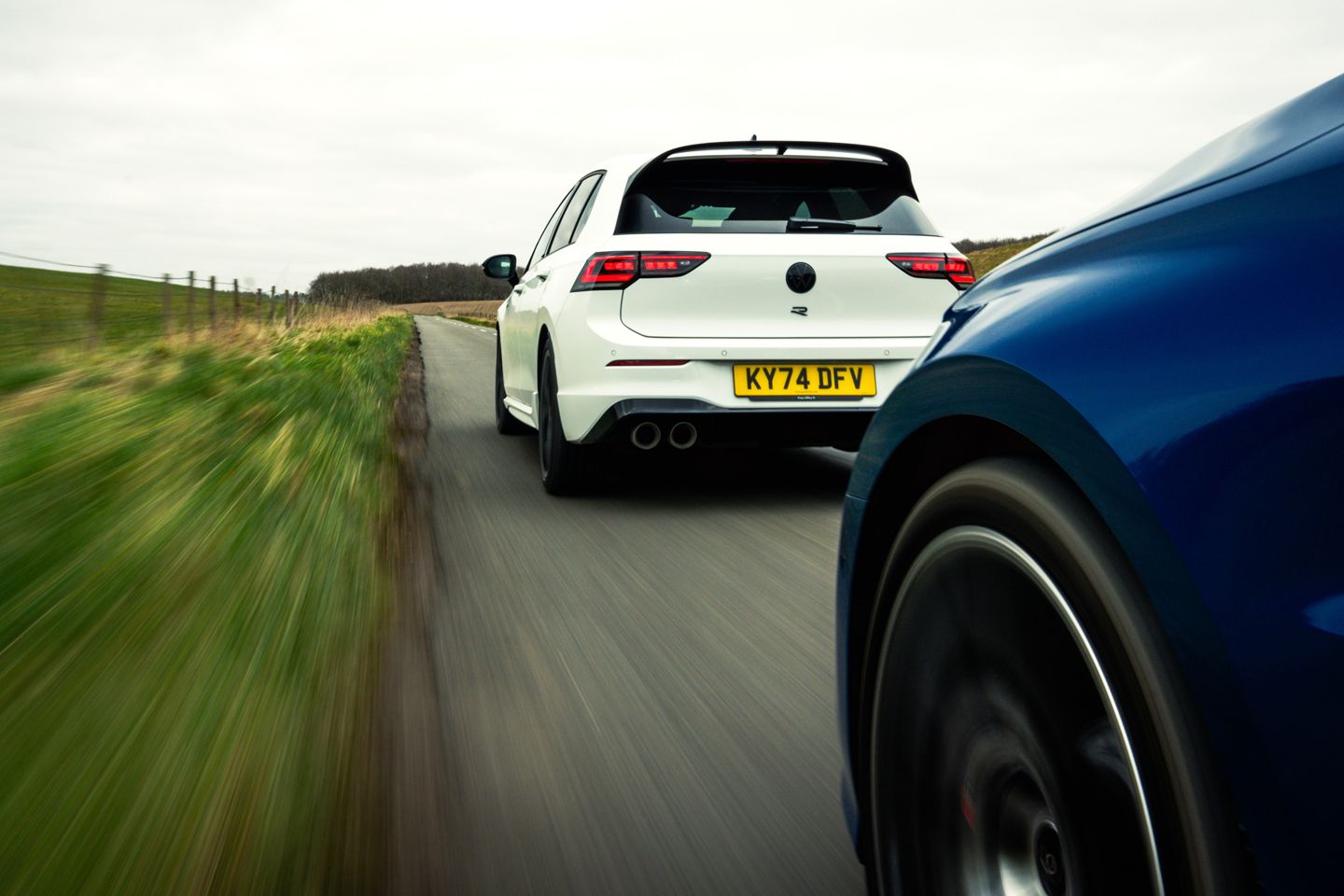
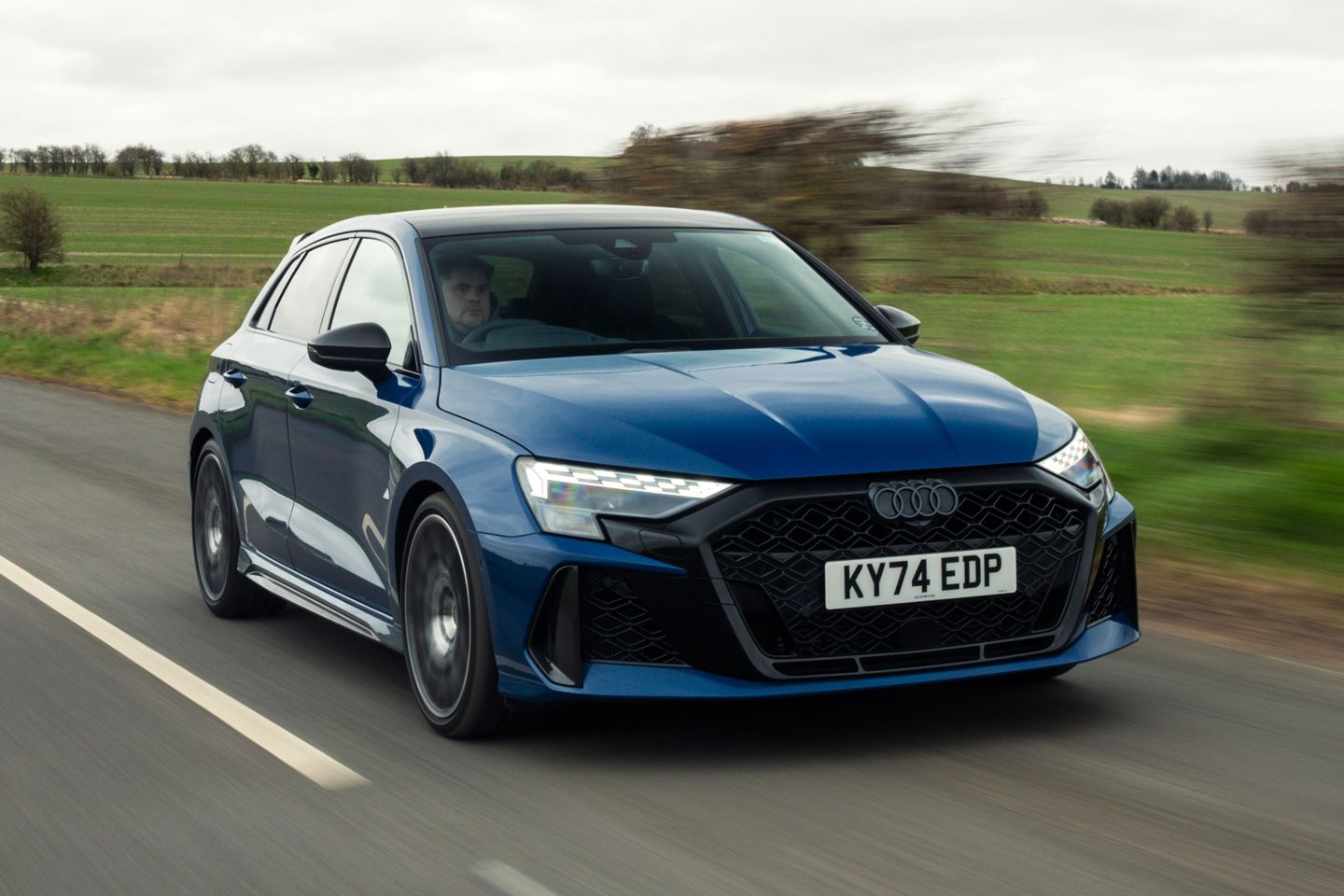
Fortunately for both, interior design doesn’t dictate verdict on PH, and it’s safe to say both are a more satisfying steer than the curiously plain BMW. Neither does exterior styling, for that matter, although it feels worth saying that to these eyes the VW reclaims some ground on that score. Even in white. Though both should convey some intent and attitude as the flagships of their ranges, the Audi just seems like it’s trying a bit too hard – from the rear especially. And whoever signed off the wheel design shouldn’t be allowed to again. Whatever happened to sleekly handsome Audi hatchbacks?
Handily both RS3 and Golf R are very good at shuffling those reservations to the back of your mind when driving. There’s never been a Golf R as eager to please as this one. It’s alert, exciting and poised, always willing for the rear axle to dictate cornering attitude in a way that still seems a little strange in a Golf. It’s wickedly fast, stops harder than it’ll ever need to, and typically shrugs off the worst a road can throw at it. There remains little beating a Golf R for maximum speed and minimum effort, with the torque vectoring on hand to ensure it’s no longer such a one-dimensional driving experience.
By comparison, the RS3 is initially more subdued, like a GT rather than a grown-up GTI. There’s a little more float at the front end as the damping must contain a good deal more engine, less sound from everywhere and a bit more lag before it wakes up and gets going. But dismiss it as your peril, because this is an even better RS3 than the already very impressive previous gen. Like the Golf, the rear axle feels a little more refined in the way it divvies power across the wheels, so the driver can be more confident in getting on the throttle. Audi’s ‘RS Torque Rear’, if hardly romantic, yet feels a more appropriate name for the setting than ‘Drift’ mode in the Golf; it lends the car a more rearward bias, which works nicely with the keener front end. The Audi puts all the tools at your disposal to get stuck in and discover its talents. Which are considerable.
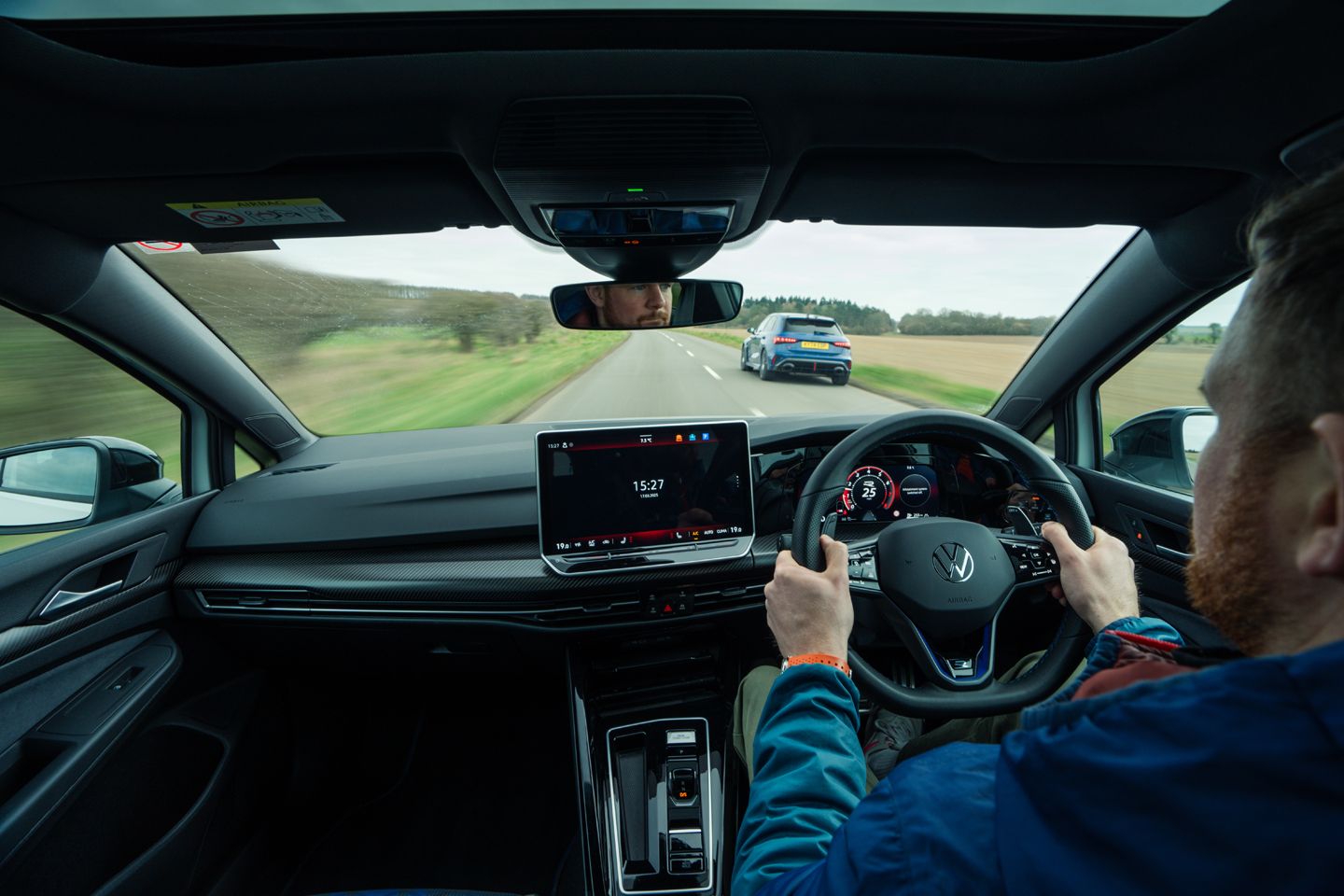
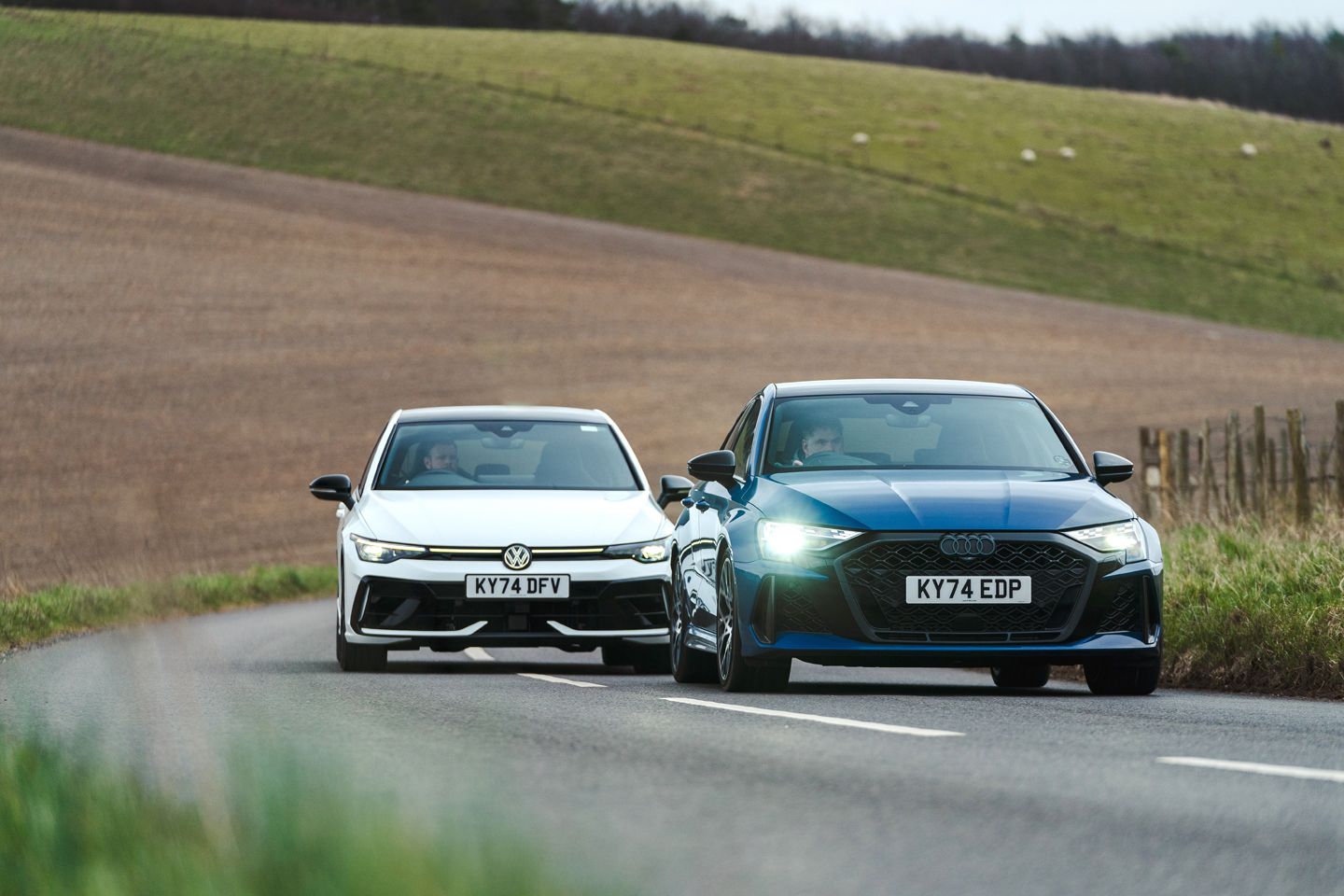
Where once Dynamic would have been avoided because of cloying steering weight and a concrete injection to the dampers, here it’s the best setting – along with the model-specific RS Performance setting – for really showing off what the Audi is capable of. There’s always more bite, more grip, more composure – not to mention the encouragement to try just that bit harder. All aided, it should be said, by usefully compact dimensions – admirably, the RS3 hasn’t ballooned over the years. It’s probably quicker down a B road than an RS6 as a result. And more fun.
That the Golf can still feel exciting back-to-back is encouraging. Its weight advantage means it always hints at a tad more agility and just a tiny bit less inertia, which it’s hard not to indulge. While it still can’t deliver the fidelity and tactile joy of a Civic Type R, there’s always mischief to be had. A brilliant distraction from its less-than-stellar attributes; where once a great Golf interior meant an ordinary driving experience could be overlooked, now the roles have been reversed somewhat.
It’s a shame then that the four-cylinder motor can’t be a little more interesting, and of course no comparison is going to highlight the character deficit like this one. Even a pricey Akrapovic exhaust and the new manual gearbox mode (eliminating kickdown and auto upchanges) can’t hide the fact that, if effective, the venerable EA888 remains no great thriller. Similarly, all the filters and smothering in the world can’t hide the star quality of the 2.5-litre inline-five; you could drive this car with ear plugs in and it’s still the more satisfying unit, that great swell of torque (almost 20 per cent more) morphing into a rampant rush for the limiter in every single gear. Add that old-school, big-hearted character to the unmistakable, unforgettable sound and engines are the biggest point of difference between the two. The Audi is charming at all speeds, whereas the VW unit doesn’t linger long in the memory however it’s driven. Both deserve better gearboxes, another area where rivals like BMW and Mercedes probably edge ahead again. Responses can be slow, and the paddles aren’t nice to use.
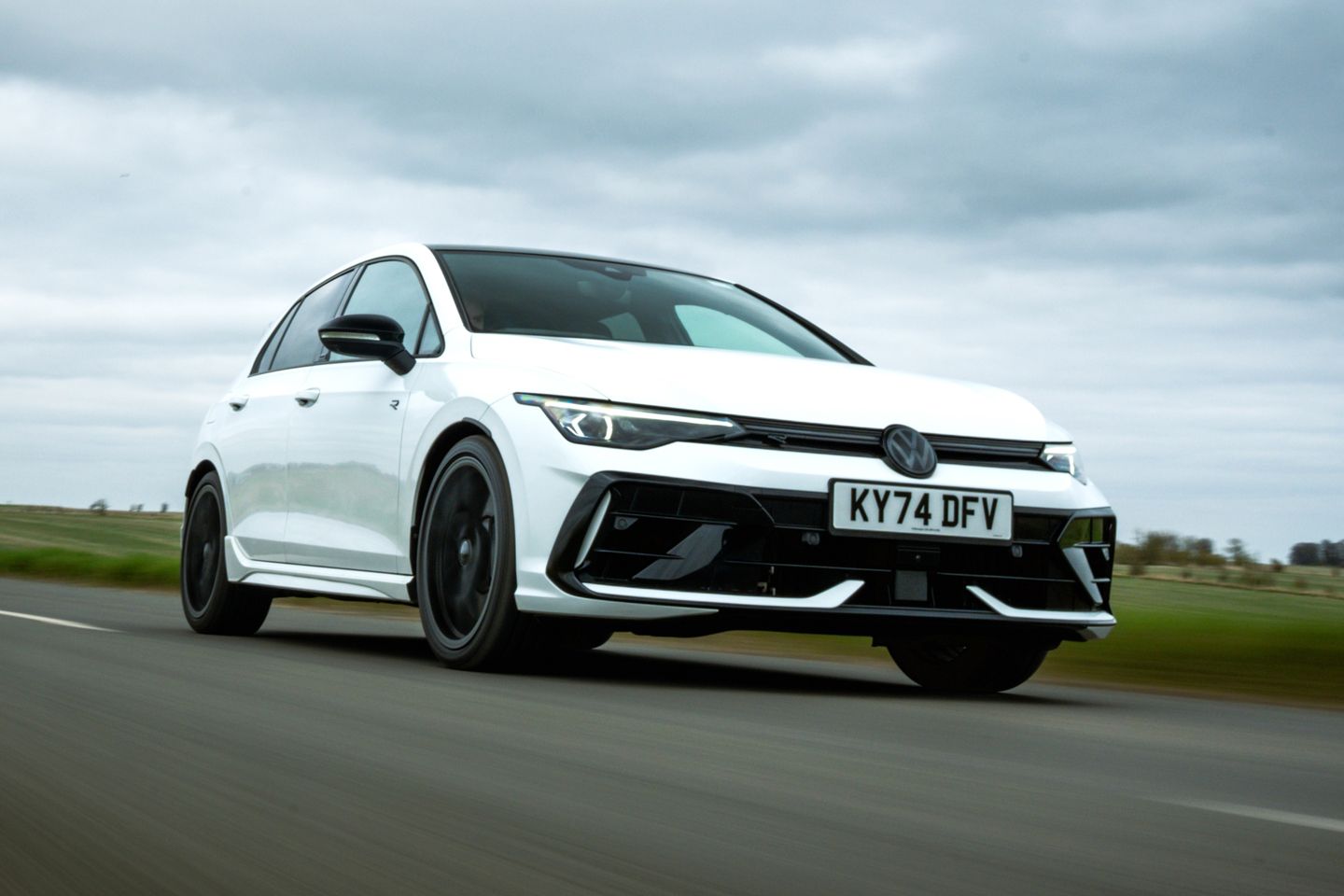
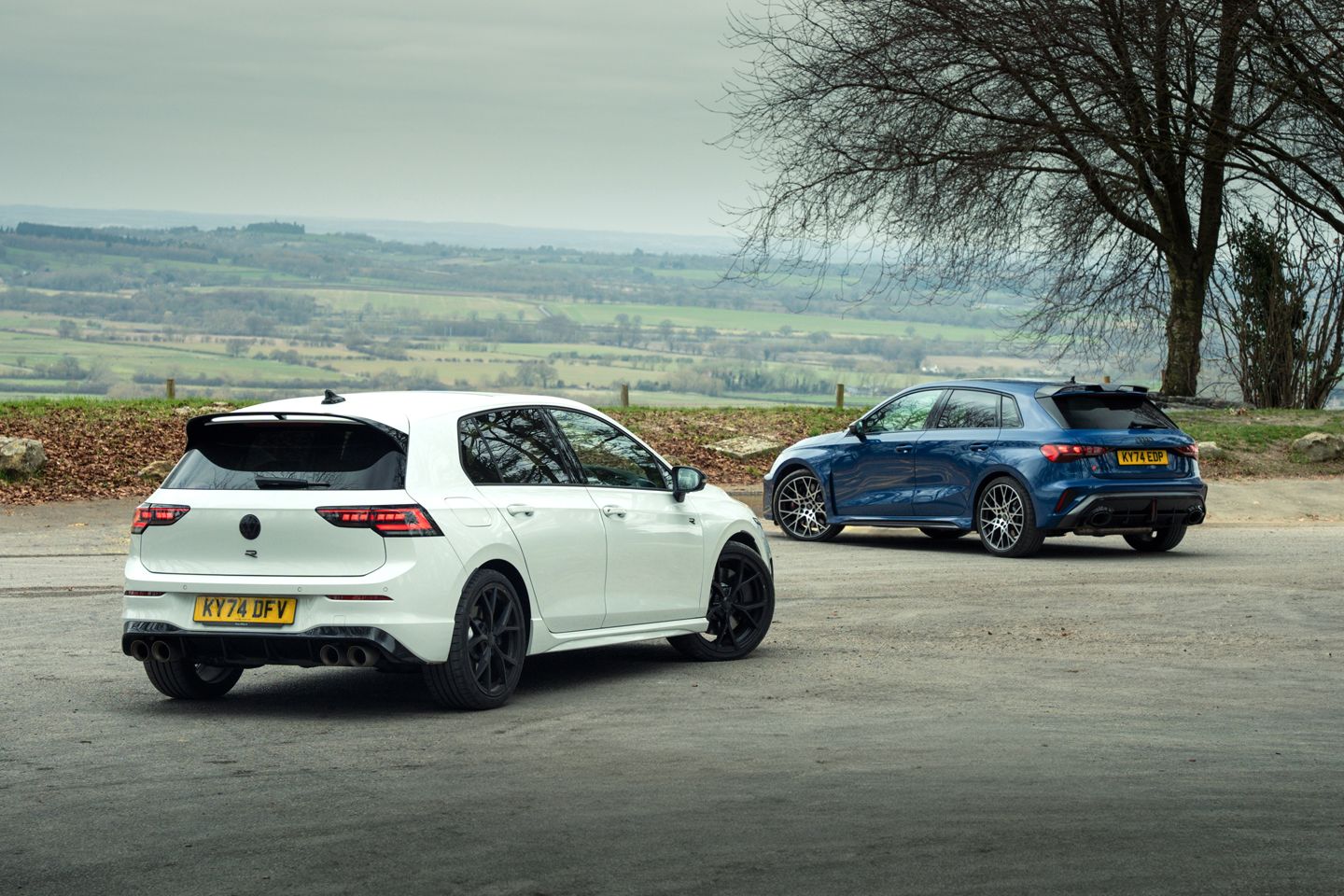
Nevertheless, as reminders of what can be achieved with a turbocharged engine and four driven wheels in five-door hatchbacks, the latest RS3 and the Golf R still offer up a huge amount. There’s not a situation or weather condition they don’t suit, as adept on the motorway as on the B road, ready for a tip run or a track day, the crawling commuters or late-night blasters. Previous versions were always close to this kind of all-court ability, but both have added a depth of chassis talent that simply wasn’t there not so long ago. This means there’s so much more to discover during the course of ownership. Or the duration of the lease, perhaps.
Which brings us to the thorny question of cost. Because for all the RS3’s perceived advantages (the interior quality and the engine, mainly), there’s most certainly a premium attached: even a regular RS3 is now £61,785. A Golf R starts at £45,785, or £46,910 in top-of-the-range Black Edition; a Carbon Vorsprung RS3 is now a £70k prospect before thinking about a funky paint colour. With Audi’s higher typical APR right now also, a customer would be paying thousands more on a deposit, more each month, and face a final payment of 50 per cent extra if comparing a Golf like this one with a standard RS3.
Ultimately, that extra outlay buys you the better car, as you’d hope it would – and as the wider VW Group intended. It gives up precious little, if anything, to the Golf as a driving experience, and even if you do prefer the VW tune of some components, this is offset by the singular personality of its powerplant and a less irksome interior. Nevertheless, it’s £17,000 more expensive in this comparison, against a car which is almost its performance rival in real life, and sometimes more fun on a twisty road. The Mk8.5 continues to be hamstrung by its frustrating shortcomings, yet its moral victory here is almost beyond question: as it typically does, the Golf R represents good value for the money. But if you’re looking for a hot hatch to invest in and enjoy long-term, while the world electrifies around it, the RS3 is it.
SPECIFICATION | 2025 VW GOLF R (MK8.5)
Engine: 1,984cc, turbocharged, four-cylinder
Transmission: 7-speed dual-clutch auto, four-wheel drive
Power (hp): 333@5,600-6,500rpm
Torque (lb ft): 310@2,100-5,500rpm
0-62mph: 4.6sec
Top speed: 155mph (168mph optional)
Weight: 1,548kg (VW ‘unladen weight’)
MPG: 34.5 (WLTP)
CO2: 186g/km (WLTP)
Price: £45,785 (price as standard; price as tested £52,580 comprising Area view for £335, Adaptive chassis control (DCC) – including driving profile selection for £735, Panoramic sunroof – tilting and sliding for £1,250, R Performance ‘Akrapovic’ exhaust system for £3,395, Carbon decorative inserts – dashboard and front door trim for £810, Vodafone SCD60 S5 Thatcham Tracker – including 6 month subscription for £270 incl. fitting)
SPECIFICATION | 2025 AUDI RS3 SPORTBACK CARBON VORSPRUNG
Engine: 2,490cc, five-cylinder, turbo
Transmission: 7-speed dual-clutch auto, four-wheel drive
Power (hp): 400@5,600-7,000rpm
Torque (lb ft): 369@2,250-5,600rpm
0-62mph: 3.8 seconds
Top speed: 155mph (174mph with Carbon Vorsprung pack)
Weight: 1,640kg
MPG: 30.4
CO2: 211g/km
Price: £68,680 (as standard; price as tested £69,575, comprising Ascari Blue paint for £895)











